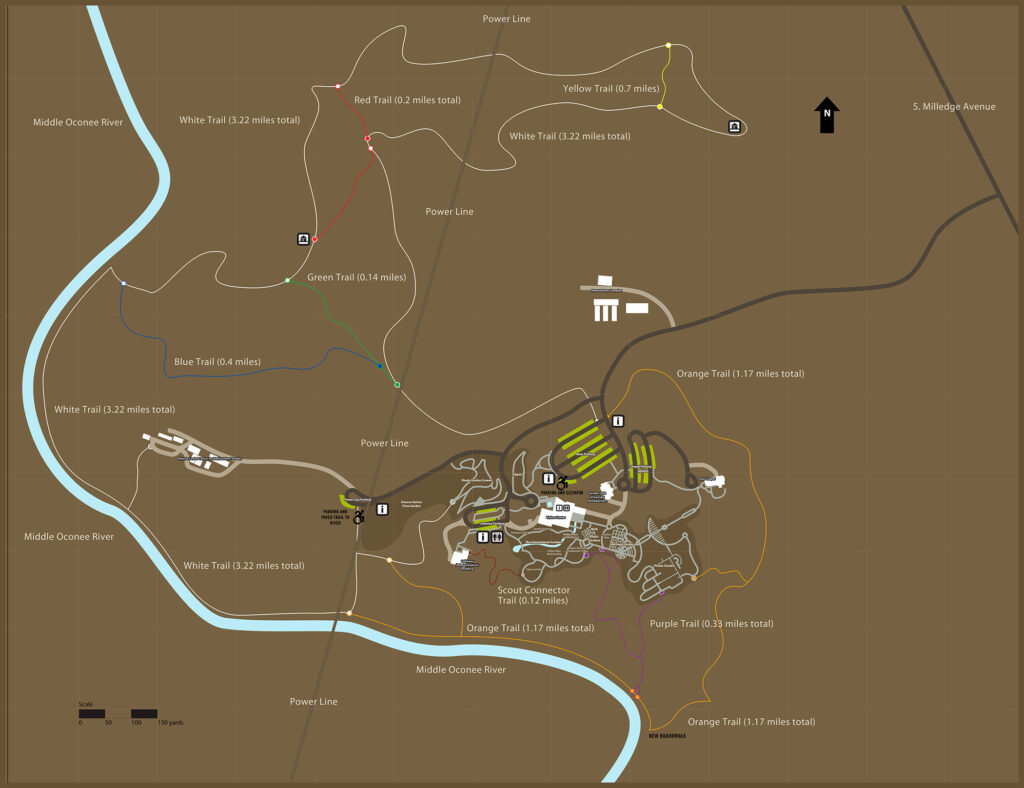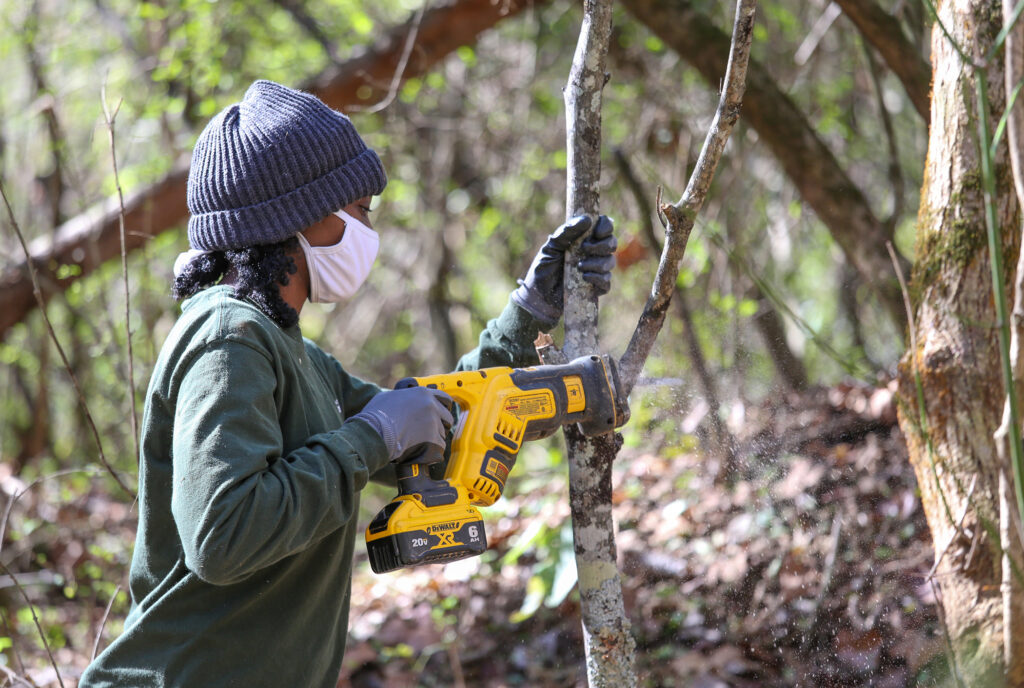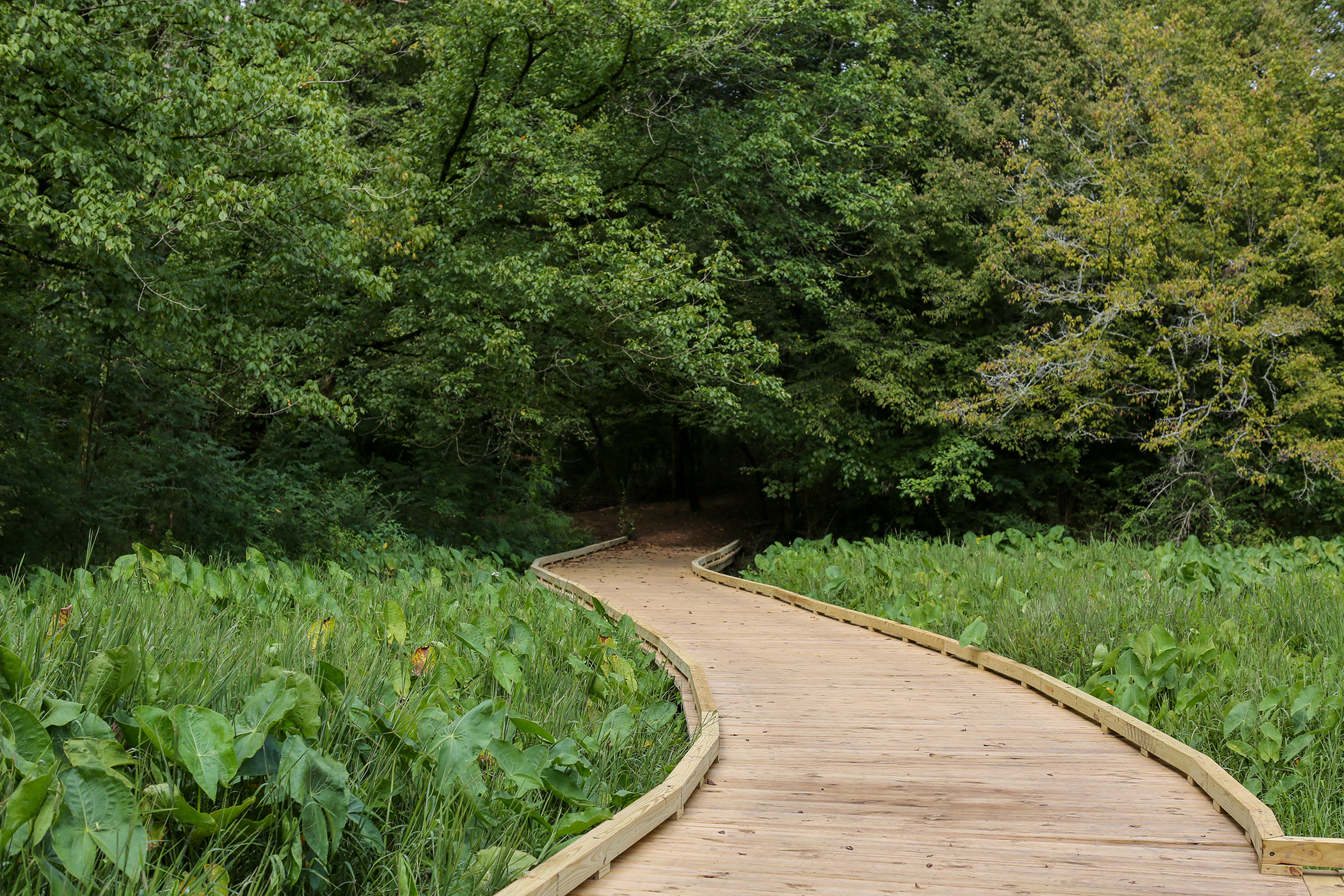The roughly half dozen miles of nature trails at the UGA State Botanical Garden of Georgia are frequented by hundreds of thousands of visitors every year. Now they are accessible to visitors in wheelchairs, pushing strollers or those who have trouble navigating natural terrain.
More than a decade in the works, the garden’s multi-year project focused on creating easier access to sections of the trail that run alongside the Middle Oconee River, specifically the White and Orange Trails. This included renovating and widening sections of the trail, building a new accessible boardwalk, and installing adjacent ADA accessible parking spots.

“Improving accessibility is extremely important to us,” said Jennifer Cruse-Sanders, director of the UGA State Botanical Garden of Georgia. “It’s fundamental to being a unit of UGA Public Service and Outreach, which serves the public, that we always look for ways to improve accessibility.”
In addition to increasing accessibility to the trail system, the trail realignment project also addressed problems caused by encroaching invasive plant species, heavy use, and years of reoccurring floods that had eroded sections of the trail, making them tenuous or even impossible to cross.

Jim Affolter, director of conservation and research at the botanical garden, spearheaded the efforts to rebuild and improve the trails, which included moving sections of it away from the riverbank and replacing invasive Chinese privet with native Georgia river cane.
“It makes the experience of hiking the trails safer and more pleasurable for a lot of our existing audiences,” said Affolter. “It helps preserve our natural areas by helping address areas with serious erosion. It also opens up natural areas in ways they haven’t been before for folks with differing abilities and limitations.”
The garden received grants from the Georgia Department of Natural Resources Recreational Trails Program and the Riverview Foundation to address these concerns over the past two years. The grant applications included a promise to include workforce development in the trail project.

They brought in the Greening Youth Foundation’s Urban Youth Corps, an Atlanta-based program which connects under-represented youth and young adults with the outdoors and careers in conservation, to help clear exotic invasive plants and build a new trail.
A team of five youth corps members spent six days working on the trails, learning to identify and remove invasive species while also treating the area to help prevent the damaging plants from returning.
“The overall goal for our young adults is for them to gain skills in green spaces; transferrable skills for them to be able to better their livelihood and become stewards of the environment,” said Daniel Jones, Urban Youth Corps director. “It’s all about empowering these young adults; empowering them in green spaces. Teaching them professional and character development skills.”

Supervised by Gary Crider, the garden’s invasive species technician, the Urban Youth Corps improved the riverbank area and helped create a new trail section that connects the nearby UGArden with the botanical garden’s Orange Trail.
“It’s been phenomenal [working with them],” Crider said. “Manpower is critical to removing this stuff and these guys don’t complain, they work hard, and we’ve been able to get a huge amount done. They’ve exceeded my expectations.”
The revamped and new trail sections are open from 8 a.m. until 7 p.m. every day except UGA holidays.
For more information and details on the State Botanical Garden trails, visit https://botgarden.uga.edu/visit-us/gardens-and-collections/trails-nature-areas/.


